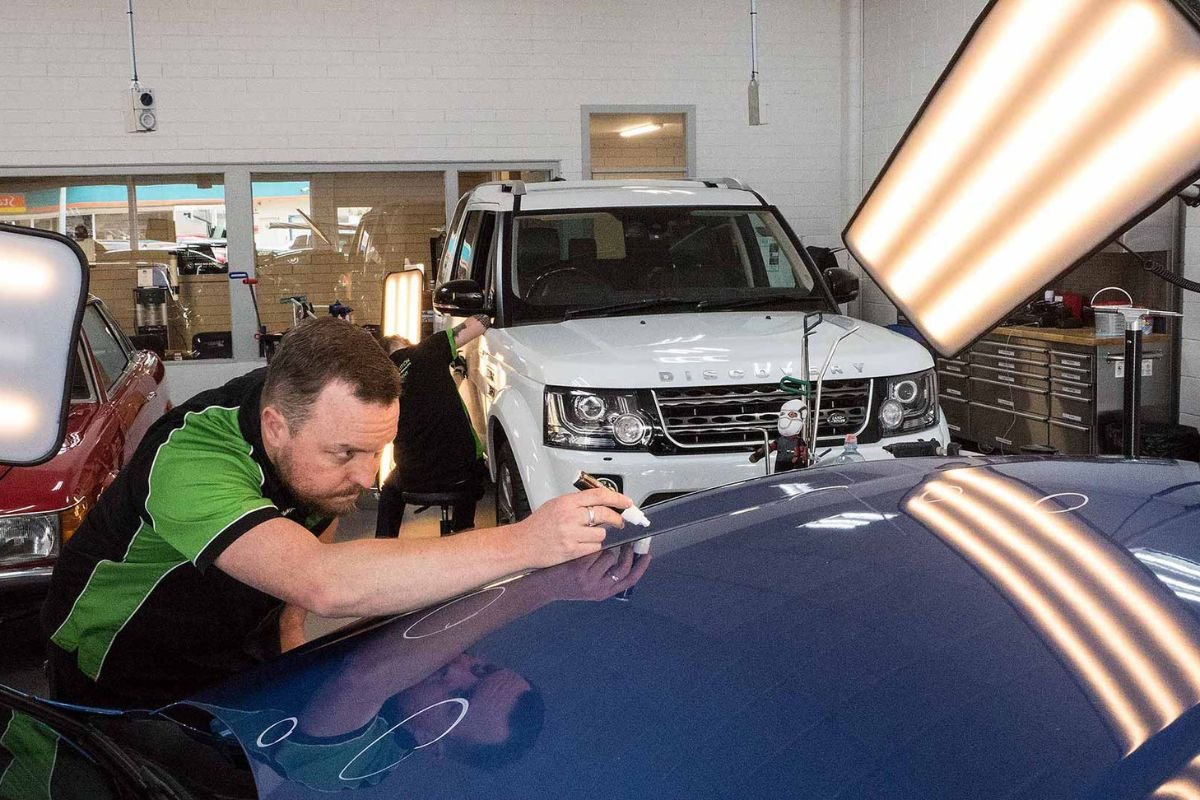Introduction:
Cars provide you with freedom, but also obligations. While driving the car, you must know that it may face some damage. It might happen all at once in a crash or slowly with frequent use. Drivers sometimes don’t appreciate how vital it is to know their car’s damage. They either ignore it, believing it’s cosmetic, or fix it without knowing what they need. Either you squander money or have a worse issue later. If drivers know the most common forms of damage, they can make sensible decisions about when to fix their car, how terrible the problem is, and what type of repair procedure to expect.
1. Scratches and Paint Damage
Scratches may seem minor compared to other automobile damage, but they might indicate deeper issues. Not only does automotive paint look good, but it also protects the metal below from weather and debris. A significantly damaged layer exposes bare metal, which rusts fast. The longer you leave it, the more the rust spreads and damages the panel structure. Parking irresponsibly, striking anything on the road, or even tree sap and UV rays may damage your paint. Minor scratches may be cleaned, while deeper grooves need panel repainting. Drivers who think a dent is ornamental typically regret not fixing it after seeing rust. Timely car damage repairs help maintain both the safety and value of your vehicle.
2. Dents and Dings
After parking in a crowded lot, almost every driver has found an unexpected scratch or ding on their car. These kinds of damage are commonly caused by doors swinging open carelessly, shopping trolleys, or little crashes. Dings that are little may not make driving harder, but they might look bad and lower the value of the car when you sell it. If they are near the car’s panels or seams, bigger dents might potentially weaken the structure. Modern repair procedures, such as paintless dent removal, let experts fix the car’s form without having to repaint it, which saves both time and money. If the ding has chipped the paint, though, further work needs to be done to fix it so that it doesn’t rust.
3. Bumper Damage
Low-speed wrecks, parking mishaps, and traffic bumps are usually stopped by bumpers first. Bumpers today are more than ornamental coverings. They include safety systems, impact absorbers, and sometimes cameras and sensors. A little fracture or misalignment may indicate inner issues. The bumper may not protect passengers in an accident if it breaks. Broken sensors may also disable safety systems. If the damage is severe, it may require sanding and painting or replacement. It’s hazardous to disregard bumper damage since what appears modest may be quite serious.
4. Cracked or Shattered Windshields
A windscreen does more than simply give you a great perspective of the road; it also helps keep the automobile safe. Its strength is weakened by even a minor chip, and once a crack forms, it tends to expand quickly. This happens due to the temperature changes, the vibrations from driving, and the tension on the glass that happens naturally. A broken windscreen makes it harder for the driver to see and makes the automobile less able to protect itself in an accident. If you act immediately, little chips can frequently be repaired with resin. But bigger cracks usually need a full replacement. Many drivers don’t realise that putting off repairs not only puts safety at risk, but it may also make the cost go up a lot when replacement is the only alternative.
5. Frame and Structural Damage
Frame and structural damage to cars is terrible since it compromises safety. Bending or twisting the frame misaligns the automobile. Misalignment can cause uneven tyre wear, making the automobile difficult to manage and reducing collision safety. Modern automobiles include crumple zones to cushion accident impact, but if the frame is broken, they may not perform properly. Sometimes a damaged frame is hidden under the car’s body. Door misalignment, uneven panel spacing, and steering issues indicate a problem. Fixing frame damage requires special machinery to realign the framework. This is costly yet important for safety and operation.
6. Mechanical Damage
Mechanical damage, which may not be evident, is the most expensive and difficult to repair. It affects key automotive elements, including the brakes, engine, gearbox, and suspension. Damage like this typically results from accidents, neglected maintenance, or poor driving. Drivers may notice dashboard warning lights, unusual sounds, or performance drops. A broken suspension may make handling unpredictable, and if you don’t replace your brakes, it might be fatal. Mechanical damage requires immediate specialised repair, unlike cosmetic damage. If you wait too long, a simple problem might become a system failure that costs more to remedy and causes breakdowns.
7. Water Damage
People rarely consider water damage unless it’s severe. Heavy rain, flooded roads, or an open sunroof during a storm can let water into automobile parts. Water in the automobile can create fungus, odours, and electrical issues. Water in the engine or gearbox can damage parts. Dashboard displays and sensors are common in modern automobiles. Water in these systems can permanently short-circuit them. Insurance companies consider a water-damaged car a total loss since it may never be recovered. Even minor water damage must be professionally cleaned and dried to avoid future issues.
8. Tire and Wheel Damage
Cars only touch the road via their tyres and wheels, making them vital to safety. Potholes and curbs may bend rims, puncture tyres, and alter alignment. Damaged tyres lower traction, making the vehicle more likely to slide or rupture at high speeds. A bent wheel rim may create vibrations, uneven tyre wear, and vehicle control issues. Drivers typically overlook how tyre and wheel damage impacts safety and performance. Tire and wheel failure incidents may be avoided with regular maintenance and rapid attention to evident damage or strange driving sensations.
Conclusion:
There are many different types of car damage, from scratches on the surface to problems with the structure. Some types are just annoying, while others make things less safe and less effective in ways that could put lives at risk. The most important thing for any driver is not to wait until the damage is too much to handle. Instead, they should figure out what the problem is early on and do something about it. Fixing things on time not only saves money, but it also keeps the car in good shape for a long time. A car that is well cared for is not only good for looks; it is also safe, reliable, and gives you peace of mind every time you drive.
Also, read: Why Eco-Friendly Cash for Cars Services Matter

